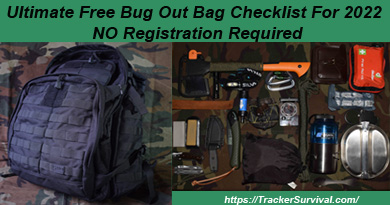14 Uses For A Shemagh In A Survival Situation
Why do so many military personnel wear a shemagh? The answer is quite simple. A shemagh has dozens of uses in a survival situation. With a little bit of imagination and creativity, the list of uses could probably reach the 100 mark.
With all the gear a military person carries on them daily, any piece of gear they choose to add on has to be of extremely practical use. It has to be worth the weight and space it takes up in any backpack.
Luckily the shemagh packs in compact and weighs practically nothing. Currently, the shemagh is Not a standard issue in the US military, but many choose to pack one with them anyway.
History Of The Shemagh
Shemaghs have been worn in the middle east for millennia. The shemagh is reported to date back to the Sumerian civilization, about 3100 BC. It is said that it used to be a symbol of high rank before it was adopted by the common people for its practical uses. Pheasants used it not as a status symbol but for its practical uses, it was used to protect them from the sun, wind, and dust as they worked, they also used it to stay warm in the cold.
14 Uses For A Shemagh In A Survival Situation
Due to its wide variety of uses in the outdoors, many preppers, survivalists, and bushcrafters have added it to their standard survival kits. Some of the more common uses are as :
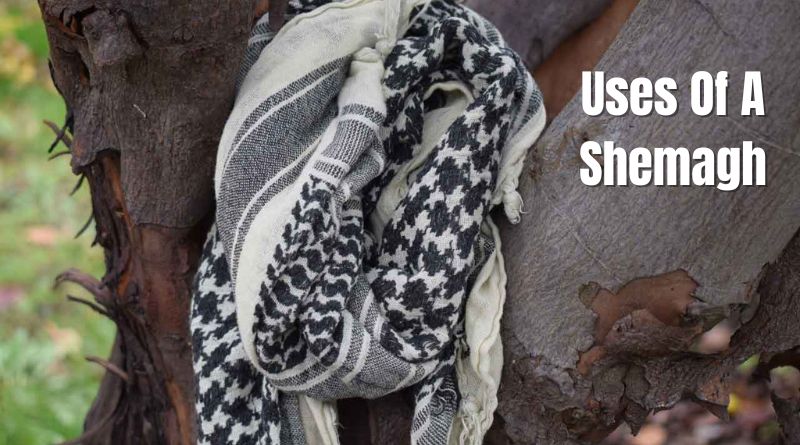
Sun Protection:
Works great, tie it around your head in the classic fashion for neck, head, and face protection from the sun. Depending on the weave, it may even be used to protect the eyes from glare, just cover your eyes with it and you will still be able to see through it while providing some protection.
Dust protection:
Use it like a bandana or mask, tied up like a highwayman’s bandana this shemagh affords decent protection against dust and sand.
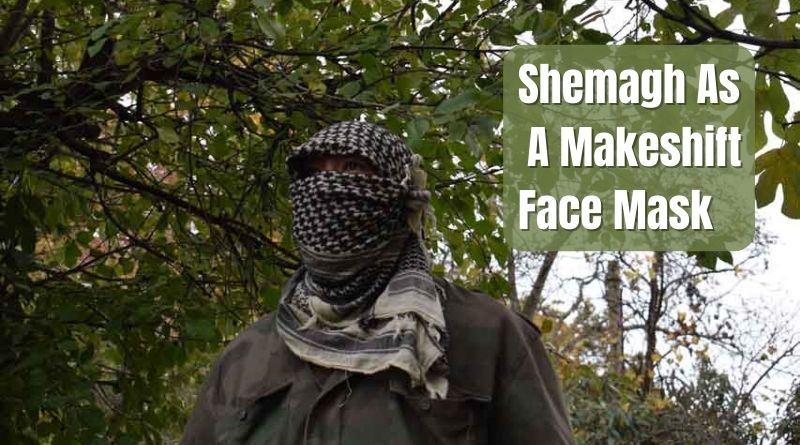
Neck warmer:
Wrap it around the neck to keep the neck warm.
Water Filter:
Fold it up a few times and pour water through it to filter out debris before making the water potable, either through a survival water filter, boiling, or water purification tablets.
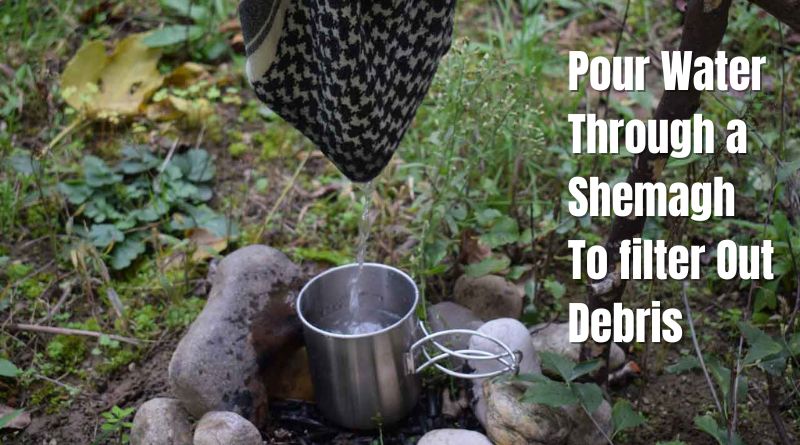
Sweat rag:
To keep sweat out of your eyes as you walk or work in the sun.
Towel:
Works as well as any piece of large cloth as a towel.
Sling:
For an injured or broken arm.
Bandage:
If kept clean it can be used as a bandage (although hopefully, you have an Ifak for that purpose).
Hobo Bag:
Lay contents in the middle and tie the four corners together to create a makeshift hobo bag.
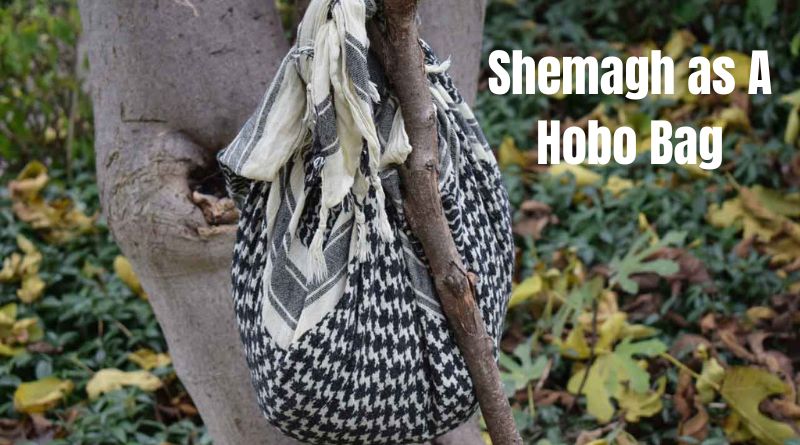
Bug protection:
Lay it over your face while sleeping to keep most bugs away.
Camouflage:
Depending on the color of the shemagh, use it to break up shape outlines.
Cordage:
Twist it tightly and it can be used as makeshift cordage.
Tinder:
In an emergency, the frilly bits can be torn off and shredded to make something that resembles cotton candy or dryer lint, this material is quite combustible and easily ignited with a Ferro rod.
Signal or Camp Marker:
Depending on the color of the shemagh, it can be used to signal people, or it can be used as a flag or marker to make a campsite more visible.
How to Choose A Shemagh
As with any piece of gear, list down the requirements and specs that are wanted, then choose what is needed. Sometimes compromises have to be made. eg: a brightly colored shemagh (red, orange, etc) can be used to signal for help. Some colors can be used as a camouflage netting once some foliage has been attached.
Other considerations are value for money, material, weight, size, etc.
Value For Money
Typically the more expensive the shemagh, the tighter the weave, the more durable it is, and the more it weighs. Now, this is a matter of preference. Some people prefer lighter, looser-weaved shemaghs, while other people prefer tighter weaved heavier materials. Both have their pros and cons.
Shemagh Material
Traditionally shemaghs are made out of cotton, there are other materials out there, such as wool or polyester blends. But I wouldn’t recommend those. For a couple of reasons. Wool shemaghs are more fragile and polyester ones are not as breathable. For something that is meant to be wrapped around the face, breathability is a major factor. There are some fabric brands that meld the best of both worlds, but those are rare.
Shemagh Weave
There are some shady shemaghs out there that are just a square piece of material with the design printed on them, those are IMO fakes. A real shemagh is a woven piece of material, if examined closely, the weave of different materials should be visible. The tighter the weave and stitching the more durable the shemagh will be.
Shemagh Size
A shemagh is quite a large piece of material, usually over 40 inches in length and width. But the sizes do vary quite a bit, I have seen them range from 42 inches to 55 inches. This will also be up to preference. Generally, I like the ones in the mid 40 inches in size. The 50+ ones feel just a little too large and bulky to me.
Shemagh Weight
The weight varies depending on the thread count. The higher the thread count the heavier the shemagh. For example, the Rothco Tactical Shemagh has a thread count of 85gm/m2 while the Hirbawi Shemagh has a thread count of 170gm/m2.
Either way, they are both pretty lightweight for what you get.
Different Names For A Shemagh
Keffiyeh
Ghutrah
Hattah
Cafiya
Capiya
Reference for the names (I am not a linguist) was from Wikipedia click https://en.wikipedia.org/wiki/Keffiyeh
Difference Between A Shemagh And A Bandana
Size, a bandana is substantially smaller than a shemagh, less than half the size. A bandana is also substantially lighter and of finer material, making it great for light use, while the larger heavier duty shemagh was created for hard use in harsher environments.
Best Shemagh For A Survival Situation
If you want the best then without a doubt get a Hirbawi Shemagh. Premium comes at a cost though, so expect to pay premium prices. Just be aware that Hirbawi have changed their 100% cotton shemaghs to a blend material, 85% cotton and 15% of high-quality synthetic material (unspecified).
If cost is an issue, the market is flooded with budget options. The best of the budget picks would the Rothco Tactical Shemagh, not as heavy with a much lighter weave count. The Rothco ticks all the essential boxes at nearly half the price. And is still 100% cotton.
Honorable Mentions: The two brands mentioned above are the editors top picks for the premium and budget version of a survival shemagh. Here are a couple of runner ups that fall somewhere in-between.
Conclusion:
While a shemagh is not essential for any survival situation, any large piece of cotton cloth can do everything that a shemagh can. But for sheer convenience, nothing beats a shemagh, which is why so many people have now started buying and packing it as part of their kit. A good quality shemagh will last years in the harshest of environments. And don’t forget another important benefit of wearing a shemagh, it looks danged cool 😁
